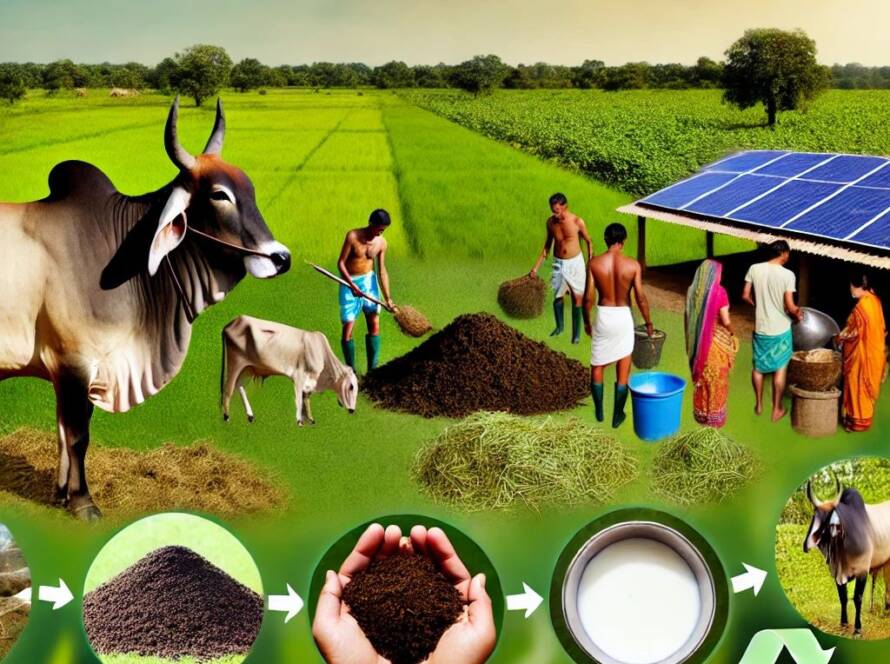In Indian culture, Gau Mata, or Mother Cow, holds a special place that is deeply rooted in spirituality, tradition, and ecology. The reverence for cows in India goes beyond mere symbolism, representing values like compassion, sustenance, and respect for all living beings. The cow has been an integral part of Indian civilization for thousands of years, playing essential roles in agriculture, religious rituals, and environmental conservation. Understanding the cultural and spiritual significance of Gau Mata sheds light on why cow welfare is considered a responsibility, not just a practice, in Indian society.
The Spiritual Significance of Gau Mata
In Hinduism, Gau Mata is considered a sacred symbol that embodies maternal qualities. Known for nurturing life, the cow is revered as a giver, much like a mother. It provides essentials such as milk, which sustains millions of families and serves as a staple in diets across India. In scriptures and mythology, cows are often described as symbols of abundance and compassion, embodying the qualities of nurturing and generosity.
According to the Vedas and other ancient texts, the cow is associated with the deity Kamadhenu, a divine cow who grants all wishes. This symbolism links the cow with prosperity and well-being, emphasizing its place as a being of high spiritual value. For devout Hindus, showing kindness to cows is seen as a way to honor the earth and show gratitude for life’s resources. This belief has fostered a tradition of cow protection and reverence that has persisted for centuries.
The Role of Cows in Indian Agriculture and Livelihoods
Beyond their spiritual significance, cows have a practical role in sustaining rural economies and supporting agriculture. Traditionally, cows have been crucial in Indian farming, as their dung and urine serve as natural fertilizers and pesticides, boosting soil health without the use of harmful chemicals. Cow dung is a valuable resource in rural India, used not only as fertilizer but also as a source of fuel and an essential material in traditional building practices. It is dried and used as fuel in households across the country, where it provides an affordable and sustainable energy source.
By improving soil fertility, cow dung enables better crop yields, helping farmers achieve sustainable harvests. This natural approach to farming is environmentally friendly, helping to reduce the carbon footprint of agricultural activities and supporting biodiversity. Cows are also essential in traditional mixed farming, where they coexist with other crops and animals, creating a balanced and mutually beneficial ecosystem.
Thus, cows contribute to India’s rural economy by providing resources that support farming communities and create pathways to economic stability. Cows represent sustainability in a way that aligns with both nature and local traditions, making them an irreplaceable part of the rural landscape.
Gau Mata in Religious Rituals and Festivals
Cows are central to various religious ceremonies and festivals in India. Festivals like Gopashtami, which celebrates Lord Krishna’s bond with cows, and Pongal, a harvest festival that honors livestock, underscore the sacred status of cows. During these festivals, people decorate cows with flowers, apply colorful powders, and offer special treats to express gratitude for their role in human life.
The veneration of cows in religious rituals is a way of reaffirming a deep respect for life. For many, caring for cows is considered a spiritual duty, and acts of kindness toward cows are believed to bring blessings. These traditions foster a sense of connectedness between humans, animals, and the natural world, reinforcing the idea that humans should act as caretakers of the earth and its creatures.
The Environmental and Ecological Benefits of Cow-Based Practices
The traditional practices involving cows have long-term ecological benefits. By using cow dung as a natural fertilizer, Indian farmers avoid the environmental harm caused by synthetic chemicals, which can leach into water sources and degrade soil quality. In addition, cow-based biogas systems are now being promoted as eco-friendly energy solutions, particularly in rural areas. These systems use cow dung to produce methane gas, which can be used for cooking and heating, reducing reliance on fossil fuels and lowering greenhouse gas emissions.
The cow’s role in sustainable agriculture and renewable energy production demonstrates its broader impact on environmental health. These eco-friendly practices align with modern sustainability principles, showing that ancient practices have relevance in addressing today’s environmental challenges. For many advocates of environmental conservation, Gau Mata represents a model of sustainability and ecological harmony, proving that honoring traditional wisdom can create solutions for the future.
A Symbol of Compassion and Coexistence
In a world where rapid industrialization and consumerism often overlook the welfare of animals and the environment, the Indian tradition of honoring Gau Mata provides an alternative perspective. It reinforces the values of compassion, coexistence, and respect for all living beings. The reverence for cows is not just about spirituality; it is a cultural ethos that encourages humane treatment and harmonious living. By protecting and caring for cows, communities preserve both their heritage and a way of life that respects and sustains nature.
Conclusion: Gau Mata as a Pillar of Culture and Sustainability
The sacred status of Gau Mata in Indian culture reflects a deep and enduring connection between people, animals, and the land. This bond highlights values that are increasingly important in today’s world—sustainability, respect, and stewardship of the environment. By cherishing Gau Mata, Indian society not only preserves a rich cultural heritage but also promotes ecological harmony and sustainability for future generations. Recognizing and upholding the sacred role of cows offers a timeless example of how cultural traditions can support sustainable living and foster a more compassionate world.



